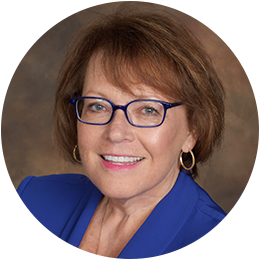
Where the Credentialing Industry Stands on Blockchain, Telehealth, and other Verification Requests
We know that many of you use the data in our annual reports to compare your initiatives and progress with other organizations. It is helpful to know, for example, the number of other organizations that have achieved full implementation of electronic applications or standardization of privileges across a health system. In this year’s survey, we included a question related to the ratio of credentialing staff to credentialed providers – and we believe that many organizations will find the responses to warrant further consideration as individual organizations compare their staffing ratio with others. Watch the recording of our 2021 Annual Report on Medical Staff Credentialing webinar – you will not only be updated on industry trends, but you’ll also hear about the impact of the pandemic on the individuals and departments responsible for credentialing in healthcare organizations.
In the meantime, obtaining data is always important when some type of change is contemplated or you are asking “why” and need some context or to know what others are doing. VerityStream conducted a quick survey a few weeks ago (we wanted to obtain some surveillance of industry practices) and we have the results available for you now. The survey was a bit of a potpourri of items that were of interest to us and fortunately, a little over 100 of you took the time to respond. Here are some highlights from the results (full results are available by clicking here). And – thanks to those of you who responded to our short survey. We greatly appreciate the fact that you took the time to share information with us and now we can share the results with others.
Blockchain
Our survey indicated that 13% of the respondents are optimistic about the potential of blockchain to be used for credentialing-related verifications. 36% are skeptical about the use of blockchain and 51% are not sure how blockchain might be used in credentialing.
3% of respondents reported that their organization is involved in some type of a blockchain project.
Telehealth
86% of respondents indicated that their organizations use telehealth providers. 60% fully credential telehealth providers, 7% use credentialing by proxy and 33% reported that they use a combination – they fully credential some telehealth providers while using credentialing by proxy for others.
Providing Information Related to Requests for Verification of Affiliation
55% of respondents said that they use a hosted website linked to their credentialing software to provide information about current/past affiliations with their organization. 10% upload their information to NAMSS so that affiliation information is available to others via NAMSS PASS™.
55% indicated that they do not query NAMSS PASS while 45% do.
Board Certification Verification
Quite a bit of information was gathered related to specific data points that are/can be obtained and/or verified related to a provider’s board certification status. The majority of respondents indicate that they do collect and verify board certification status. 94% verify board certification status at the time of initial appointment, 73% verify it at the time of reappointment and 66% verify board certification status at the time of expiration.
There were a number of additional questions related to board certification status – take a look at the survey questions and results if you are interested in drilling down into specific aspects of board certification verification. It appears to me that probably some of the items that are collected and/or verified as well as maintained in a provider database are done because it has been customary to do so. It is a good time to determine exactly what data elements related to board certification are significant and eliminate collection and ongoing maintenance of items that are not needed for a specific purpose.
